The S&P 500 and Nasdaq closed at record highs on July 2, boosted by strong gains in tech stocks and positive news from a trade deal between the US and Vietnam. Meanwhile, the Dow Jones Industrial Average dipped slightly but remained within 1.2% of its December 4, 2024 peak.
At the close, the S&P 500 index rose 29.41 points (0.47%) to 6,227.42 points. The Nasdaq Composite rose 190.24 points (0.94%) to 20,393.13 points. The Dow Jones fell slightly by 10.52 points (0.02%) to 44,484.42 points. The New York Stock Exchange recorded 358 stocks reaching new peaks and only 41 stocks falling to bottoms.
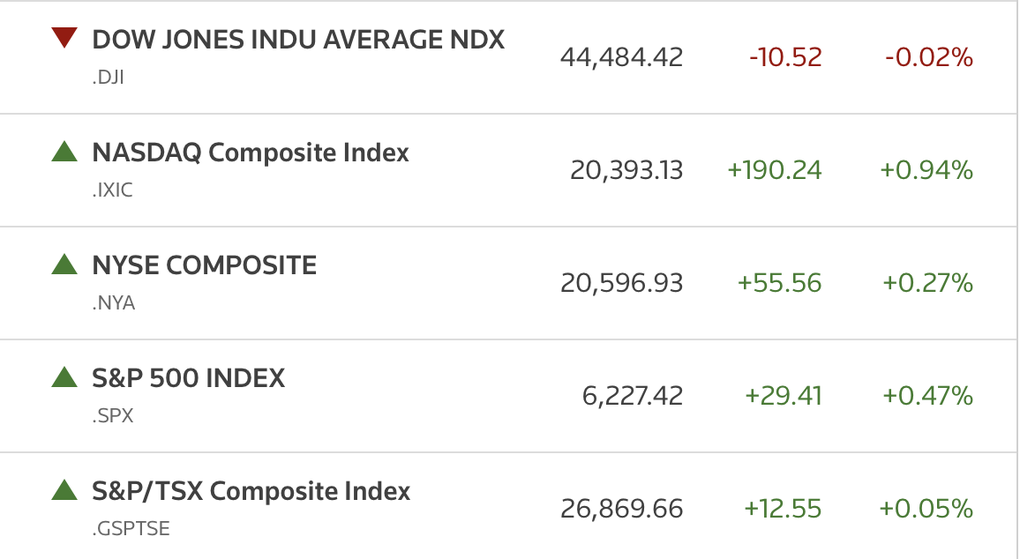
Some US stock indexes closed on July 2 (Source: Reuters).
Tesla shares jumped 5% after falling sharply earlier in the week, even as the electric carmaker reported a sharp drop in second-quarter deliveries. Some traders said the numbers were better than analysts had forecast. Tesla shares have lost more than 20% year to date.
On the other hand, Centene shares plummeted 40% - their lowest in eight years - after the health insurer canceled its 2025 profit forecast due to new data showing a significant decline in revenue from health insurance plans.
In recent weeks, Wall Street has continuously recorded new peaks, reflecting investors' willingness to accept risks despite the volatile market context, from inflation to management policies and budget deficits.
The Nasdaq rebounded to an all-time high in late June, helped by large stocks like Nvidia, Apple and Tesla. The highly leveraged ETF TSLL, which doubles Tesla’s daily returns and is often used for short-term speculation, was also among the most actively traded.
Investors are turning their attention to the US non- farm payrolls report, which will be released on July 3 (US time) to look for clues about the possibility that the US Federal Reserve (Fed) will lower interest rates in the near future.
Jim Awad, senior director at Clearstead Advisors, said a weakening economy is a double-edged sword. If the labor market cools and forces the Fed to cut interest rates, that would be a positive sign. However, if it cuts too far, it could hurt growth and corporate profits.
In a related development, Mr. Trump’s massive spending and tax reform bill has been passed by the US Senate and is awaiting final consideration by the House of Representatives. According to independent analysis organizations, this law could increase the US public debt by 3.4 trillion USD over the next 10 years.
The market opened in the red on July 2 after data showed US private sector employment unexpectedly fell in June, while the previous month’s figure was also revised down. However, the decline was quickly reversed when the US and Vietnam reached a new trade agreement.
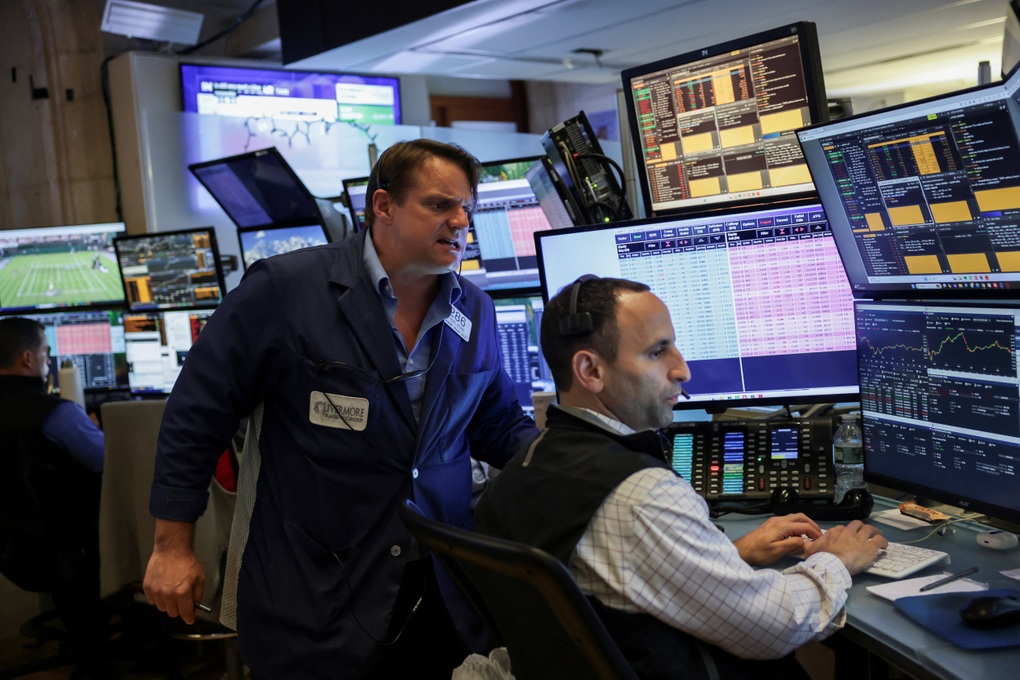
US stocks hit a peak on July 2 (Photo: Reuters).
“Investors are feeling somewhat reassured by the progress on trade. The deal with Vietnam is a positive sign,” said Michael Arone, chief strategist at State Street Global Advisors.
Markets are awaiting the non-farm payrolls report - an important indicator that will be released a day early due to the US Independence Day on July 4. According to a Reuters survey, the report is expected to show that the pace of job growth in the US slowed in June, and the unemployment rate may inched up to 4.3%.
“If the data weakens, investors expect the Fed to cut rates sooner,” said Mr. Arone.
Total trading volume on US stock exchanges reached nearly 17 billion shares, lower than the average of the last 20 sessions.
Meanwhile, Asia-Pacific stock markets traded mixed in the morning session on July 3 as investors assessed the impact of the new trade agreement between the US and Vietnam just announced by President Trump.
Japan's Nikkei 225 fell 0.15%, the Topix lost 0.21%. On the other hand, South Korea's Kospi rose 0.77%, the Kosdaq rose 0.5%. In Australia, the S&P/ASX 200 edged up 0.13%. Hong Kong's Hang Seng Index fell 0.64%, while mainland China's CSI 300 rose 0.14%.
Source: https://dantri.com.vn/kinh-doanh/chung-khoan-my-lap-dinh-chau-a-trai-chieu-20250703093550184.htm



![[Photo] Prime Minister Pham Minh Chinh chairs a meeting of the Government Standing Committee on overcoming the consequences of natural disasters after storm No. 11](https://vphoto.vietnam.vn/thumb/1200x675/vietnam/resource/IMAGE/2025/10/09/1759997894015_dsc-0591-jpg.webp)
![[Photo] General Secretary To Lam visits Kieng Sang Kindergarten and the classroom named after Uncle Ho](https://vphoto.vietnam.vn/thumb/1200x675/vietnam/resource/IMAGE/2025/10/09/1760023999336_vna-potal-tong-bi-thu-to-lam-tham-truong-mau-giao-kieng-sang-va-lop-hoc-mang-ten-bac-ho-8328675-277-jpg.webp)

![[Photo] President Luong Cuong attends the 80th Anniversary of the Traditional Day of Vietnamese Lawyers](https://vphoto.vietnam.vn/thumb/1200x675/vietnam/resource/IMAGE/2025/10/09/1760026998213_ndo_br_1-jpg.webp)



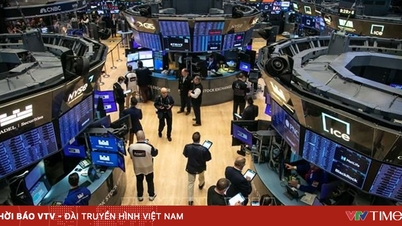

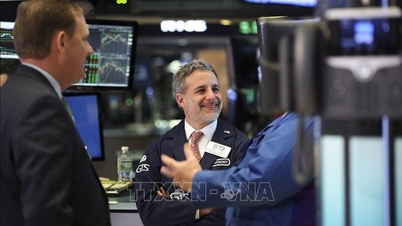
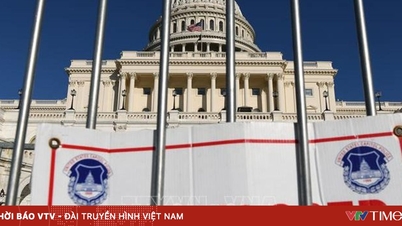
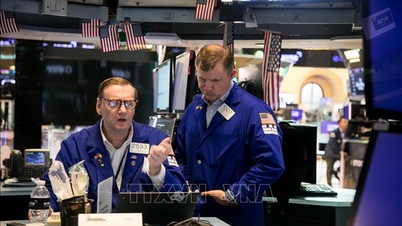






















































































Comment (0)